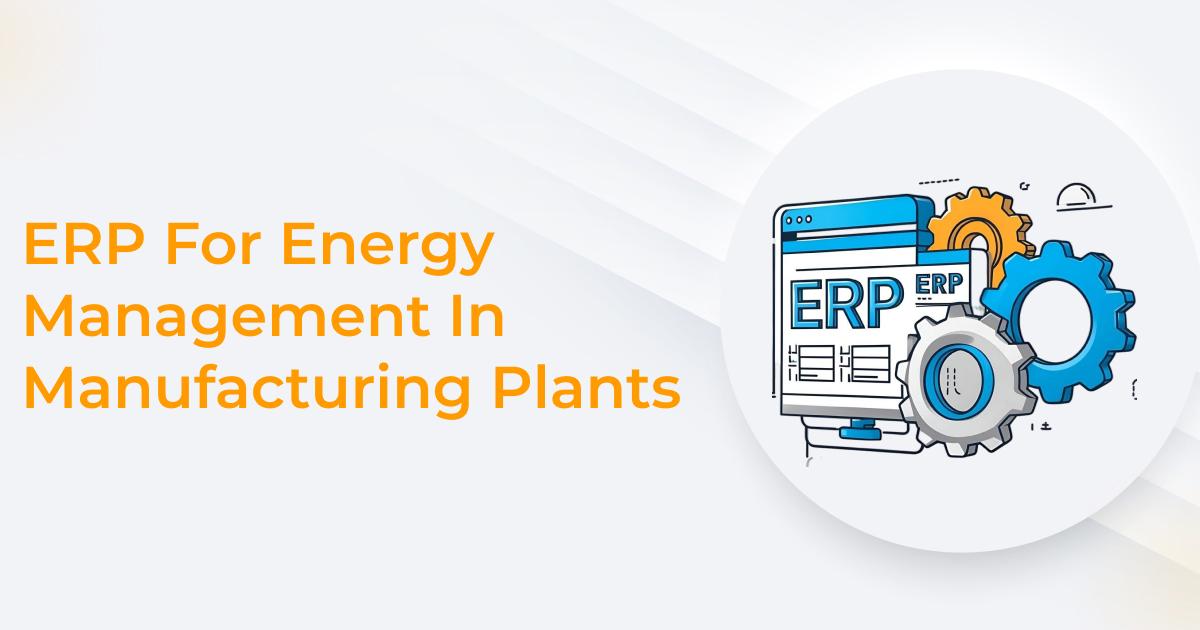ERP For Energy Management In Manufacturing Plants

In my more than eighteen years of experience with ERP systems in manufacturing, I have witnessed how energy costs covertly reduce profitability and confuse shop floor transparency. Effective energy management is now essential for operational control, sustainability, and financial success. In order to transform energy from a cost centre into a strategic asset, I have personally assisted manufacturers in implementing ERP systems that track and optimise energy usage in real time.
According to Statista, Revenue in the Energy Management market is projected to reach US$263.0m in 2025, highlighting how significant energy efficiency is for manufacturing operations.
Energy Management Matters in Manufacturing
Energy use in manufacturing has a big effect on costs, goals for sustainability, and rules for compliance. Manufacturing ERP Development, allows me to add structure and clarity to an often-overlooked area.
Manufacturers cannot optimize operations or estimate energy consumption if they lack visibility into usage trends. ERP increases transparency across plants, allowing for informed decisions that link energy use with production goals.
How ERP Enables Real-Time Energy Monitoring
ERP platforms give me live insights into energy usage at the machine, line, and plant levels. This visibility allows quick identification of energy spikes or inefficient practices.
ERP facilitates real-time monitoring of gas, steam and electricity use by integrating mile-marker dashboards. In addition to lowering energy waste, this proactive strategy improves uptime and process dependability, guaranteeing energy-efficient operations.
ERP Tools for Energy Optimization
ERP doesn’t just monitor consumption—it actively optimizes it through advanced features:
-
Peak Load Management: Identifies when energy usage peaks and adjusts production accordingly.
-
Schedule Automation: Aligns production schedules with off-peak energy rates.
-
Predictive Planning: Forecasts energy needs based on production plans.
-
Efficiency Alerts: Notifies operators of anomalies like motor inefficiencies or HVAC overuse.
This helps me ensure energy efficiency is embedded into plant routines, not just tracked on a spreadsheet.
ROI of ERP-Based Energy Management
Implementing ERP for energy control provides substantial benefits. Manufacturers I've dealt with have routinely reported lower utility costs, smoother operations, and higher environmental claims.
The consequence is twofold: cheaper energy bills and better process performance. Furthermore, monitoring energy consumption promotes compliance, something more businesses are seeking as green rules tighten.
Overcoming ERP Adoption Challenges
Deploying energy modules in ERP systems can encounter resistance—legacy machinery, integration complexity, or limited user buy-in. I’ve learned that success starts with targeting high-impact areas first.
Sub-points for Smoother Implementation:
Pilot on High-Use Equipment: Start with energy-heavy machinery to demonstrate savings.
Use Energy Dashboards: Visual data helps teams understand and adopt energy goals.
Integrate with Maintenance: Leverage energy data to flag equipment needing service or recalibration.
Train Operators on Energy Behavior: Simple adjustments like adjusting idle machines or optimizing shifts can make a big difference.
This phased, data-driven approach builds trust in the system and ensures energy gains are realized across the floor.
Conclusion
To me, an ERP is a strategic tool for advancing energy efficiency, cost reduction, and sustainability, not just manufacturing software. ERP assists companies with more sustainable and effective energy management by integrating automation, real-time monitoring, and predictive analytics.
ERP is the cornerstone of energy management, not only an investment for businesses trying to reduce energy costs and create more environmentally friendly operations.
- Vibnix Blog
- Politics
- News
- Liberia News
- Entertainment
- Technology
- Formazione
- Art
- Causes
- Crafts
- Dance
- Drinks
- Film
- Fitness
- Food
- Giochi
- Gardening
- Health
- Home
- Literature
- Music
- Networking
- Altre informazioni
- Party
- Religion
- Shopping
- Sports
- Theater
- Wellness


